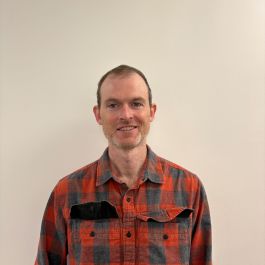Over the next three years, 92 percent of companies plan on increasing their AI investments, but only one percent of leaders describe their company’s deployment of the technology as "mature."
What are the implications of this?
That for engineers starting to work with AI, endless opportunities abound — which is why we caught up with five tech professionals leveraging the technology to their advantage.
Featured Companies
Metropolis Technologies, Inc. is an artificial intelligence company whose computer vision platform enables checkout-free payment experiences for the real world.
What types of products or services does your engineering team build? What problem are you solving for customers?
At Metropolis, we’re an AI company for the real world. Our AI-powered recognition platform and effortless payment system have transformed one of the most analog industries — parking. We replaced paper tickets and cash with a seamless drive-in, drive-out experience. Now we’re expanding to new real-world interactions like refueling, drive-thrus, retail and stadiums.
Our engineering teams focus on building and scaling technology across 4,200-plus sites serving more than 50 million customers. Key priorities include advancing our proprietary vision systems — Orion and BigMac — creating personalized, frictionless payment experiences, ensuring reliability and security at scale and supporting partners across parking lots, airports and cities through robust data integration and analytics.
Recently, we’ve turned our AI focus inward to tackle a real-world challenge: building Metropolis itself. This led to our newest initiative — context engineering — a service designed to manage AI systems by giving them the right information and tools at the right time.
Tell us about a recent project where your team used AI as a tool. What was it meant to accomplish? How did you use AI to assist?
When we introduced AI tooling our Visit Enablement team took a fresh project off the roadmap to improve our map search capability with clustering capabilities. Instead of many labels on a zoomed out map we would show a cluster with the number of sites. Our normal estimate for a project of this size with frontend and backend work was two to three weeks.
An “All AI” approach using tools like Google Gemini, Github Copilot and Claude Code allowed the team to deliver a working prototype in less than a week. They were able to quickly iterate on the product requirements, the visual design and the frontend code/logic using MCP tools. The backend team also developed better search capabilities and used a common API to connect the systems.
What would that project have looked like if you didn't have AI as a tool to use?
Without our new AI capabilities, the map clustering project would have faced multiple transitions and delays from team handoffs. A project of this nature would also have required significant time from our busy frontend team. We’ve taken a holistic approach to AI tooling — starting with a tinkering phase that yielded early gains in code completion and reviews. Once agentic AI became widely available in May, we went all-in, using systems thinking to automate entire problems instead of isolated tasks. Our AI transformation came in three areas: developer acceleration — faster, higher-quality code, tests and documentation. Parallel execution — developers can offload security reviews, flaky test fixes and meeting agendas to AI. Process elimination — with MCP services we go from visual design to frontend code and with spec-driven development from idea to implementation, reducing handoffs and delays. We’re now building an “AI Developer” program, managing evolving tools, tracking ROI and investing in context engineering to make AI and humans more efficient. Despite added training, productivity gains are significant, creating a virtuous cycle that aligns with our mission to make the real world.
Chime designs member-centric banking apps with easy-to-understand financial tools.
What types of products or services does your engineering team build? What problem are you solving for customers?
At Chime, our engineering teams build the systems that power modern banking for millions of members. These are products like Chime Card, Chime+, MyPay, SpotMe and more that help everyday Americans spend, save, build credit and access short-term liquidity. Underneath it all is ChimeCore, our proprietary ledger and transaction-processing platform that lets us move fast while keeping members safe.
Our job isn’t just to ship more features; it’s to help everyday Americans achieve financial progress. Every optimization — whether shaving milliseconds off a transaction or catching fraud a little faster — directly reduces stress for our members and helps them on their financial journeys. That’s the mission that drives every line of code.
Tell us about a recent project where your team used AI as a tool. What was it meant to accomplish? How did you use AI to assist?
AI is now woven into how we build. Engineers across Chime use coding assistants to generate tests, draft documentation and summarize pull requests — always with human review before anything ships. About 27 percent of our code was written with AI in June 2025 and automation across build, test and deploy shortened complex change cycles from roughly 12 weeks to three days.
The result isn’t just more output; it’s better engineering. AI handles the repetitive scaffolding so developers can focus on architecture, reliability and security — raising both velocity and quality at the same time.
What would that project have looked like if you didn't have AI as a tool to use?
Before we adopted AI widely, engineers spent hours — or days — on setup, documentation and reviews: necessary work that drains creative energy. Today, those loops are largely automated, letting teams spend time where it matters most — design, safety and member impact.
The bigger change is cultural. We now think in systems: humans, AI and data are all instrumented for transparency. AI drafts, humans verify, metrics validate. That feedback loop has shifted us from managing keystrokes to managing outcomes.
At Chime’s scale, that impact is enormous — faster innovation, safer releases and engineers spending more time solving real problems that help real people.
VSCO is a platform that equips photographers with tools, community and exposure to expand creatively and professionally.
What types of products or services does your engineering team build? What problem are you solving for customers?
Our data engineering team builds and maintains data models that power business intelligence, experimentation and customer-facing data products. We enable internal teams to make data-informed decisions and create better experiences for VSCO users by making high-quality, reliable data accessible across the company.
Tell us about a recent project where your team used AI as a tool. What was it meant to accomplish? How did you use AI to assist?
We recently applied AI as a tool to create VSCO’s For You Feed, a personalized recommendation system that curates content tailored to each user’s creative interests. The feed uses machine learning models trained on visual and behavioral data to understand what inspires each person and suggest relevant creators and styles. By using AI to automate the matching of user preferences with diverse creative content, we improved both discovery and engagement across the platform helping users find new sources of inspiration and connect more deeply with the creative community on VSCO.
What would that project have looked like if you didn't have AI as a tool to use?
Without AI, building personalized recommendations would have required extensive manual feature engineering, rule-based heuristics and constant tuning to keep results relevant. This would have limited scalability and made it difficult to adapt to changing user behavior.
AI tools made it possible to leverage image and text understanding directly, significantly accelerating development and improving recommendation quality.
More broadly, AI has changed how we work by reducing the time between idea and prototype, enabling us to experiment faster, iterate on models more intelligently and focus more on creative and strategic aspects of data engineering rather than low-level implementation details.
Sonatus accelerates the development of software-defined vehicles to enable the digital transformation of the automotive industry.
What types of products or services does your engineering team build? What problem are you solving for customers?
I work on our AI Technician product, which is software designed to help service technicians quickly diagnose and resolve vehicle issues. For example, a technician can ask the AI how to troubleshoot an error reported by a vehicle sensor and the AI will analyze the problem and recommend actionable steps to fix it. Our goal is to make vehicle diagnostics faster, more accurate and less reliant on individual experience.
Tell us about a recent project where your team used AI as a tool. What was it meant to accomplish? How did you use AI to assist?
We use AI as a coding assistant on most of our projects. It’s not always about adopting AI for a specific task; often, it’s about leveraging LLM-based tools to help write software more efficiently. In one recent example, I needed to convert a binary file into a human-readable table. Reading binary data manually is time-consuming, but using Gemini, I was able to generate a Python script that converted it into a CSV in seconds.
What would that project have looked like if you didn't have AI as a tool to use?
Without AI, that task would have taken much longer and I would have had to manually figure out how to parse and process the binary data. While AI speeds up tasks, it isn’t perfect. LLMs can overcomplicate simple problems or generate buggy code that tries to patch symptoms rather than fixing the root cause. Used correctly, AI dramatically improves productivity, but it’s important to remain critical and not become overly dependent on it.
Airwallex provides companies with its global payments and financial platform. One of Airwallex’s AI goals is to build Agentic Finance and move beyond SaaS, delivering not just finance infrastructure, but actual finance work.
What types of products or services does your engineering team build? What problem are you solving for customers?
We’re creating an AI CFO for founders and small companies with AI automation for several services ranging from bookkeeping to payroll and eventually financial planning and analysis. One of the aspects of the CFO function we’re tackling is managing a company’s day-to-day finances, also known as bookkeeping. Traditionally, founders would either handle this themselves or hire someone part-time. It involves tracking all the money flowing in (for example, customer revenue through online checkout, invoices or wires) and all the money flowing out (such as expenses for salaries, rent, utilities) to ensure the company’s finances are accurate and up to date. We’re building intelligent algorithms that can understand these financial patterns and handle the nuances of accounting much like a human accountant.
Tell us about a recent project where your team used AI as a tool. What was it meant to accomplish? How did you use AI to assist?
My team uses AI to supercharge our smaller team with Cursor and Claude Code able to generate quick prototypes in the frontend, along with making our integrations with platforms easier. Also, MCP servers have been significantly useful in speeding up integrations with different tools. I used Ramp MCP servers to pull data from live customers and then tested a variety of machine learning models with HuggingFace MCP. After creating multiple pull requests, I used Graphite agents to review and evaluate code style and examine edge cases that I may have missed.
Lastly, when building out our platform, we relied heavily on AI to help us flesh out possible algorithms with Claude research. Using AI to iterate through these algorithms allowed us to evaluate trade-offs much faster. I went through several conversations with Claude to understand edge cases of the algorithms and with each changing requirement, the assistant could recommend reasonable suggestions. The research mode also provides citations for the papers, allowing me to read each one and draw my own conclusions.
What would that project have looked like if you didn't have AI as a tool to use?
Finance and accounting are complex and nuanced fields with lots of rules, guidelines and judgment calls that companies have to make. There’s some flexibility in how you approach things, but you still need to stay within the boundaries of what’s allowed. Building AI-powered workflows for areas like this takes a lot of research to really understand which technologies and algorithms are best suited to handle all that complexity while making sure the finances are accurate.
One of the ways that AI is unique in empowering our workflow is that it can quickly assess what algorithms and technology are out there and break it down into categorization.This saves me hours of manual research and summarization. Also, all of the context that AI can synthesize and summarize means that I can quickly assess the pros and cons of different algorithm ideas that I have proposed. As we gather more requirements after talking to our design partners, we can then use the saved context to continue to iterate on these algorithms.
Although AI has some limitations, I primarily believe it changes my workflow by offloading menial testing and condenses the research I need to do to iterate through different designs.













